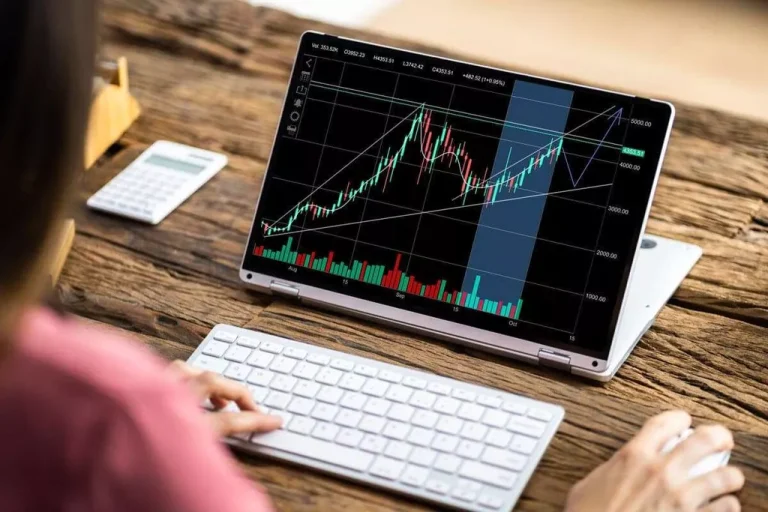Content
Determining where and how to draw a Fibonacci sequence can be tricky, which is why one of the most popular ‘Auto-analysis’ tools on the TrendSpider platform is the Auto-Fib drawing tool. To utilize this tool, simply click on the ‘Auto Fib’ button in your top toolbar and a Fibonacci sequence will be drawn on the most recently completed move per the time frame selected. Optimal Trade Entries are just that; They represent the best places to get into a trade and they can be identified by utilizing the Fibonacci drawing tool. In most cases, an optimal trade entry will lie somewhere between the 61.8% and 78.6% retracement of an expansion range. Often, a displacement will occur just after a liquidity level has been breached and will often result in the creation of both a Fair Value Gap and https://www.xcritical.com/ a Market Structure Shift.
Master All 4 ICT Kill Zones Times – Ultimate Guide for 2024

SMC and ICT traders use such concepts within a price range to look for potential opportunities. This article explores its importance in understanding underlying market dynamics and price movements, and provides detailed analysis of Liquidity sweeps. The market makers are a compelling force on the sell side of the financial market. Resting orders, such as limit orders and stop losses, contribute significantly to market liquidity by creating a buffer of potential transactions at certain price levels. Their presence ensures smoother price transitions and can often signal or trigger large market movements when these orders are what is sell side liquidity activated or targeted by buy side liquidity providers.
Buy Side Liquidity And Sell Side Liquidity in ICT Trading — How Does It Work?
For instance, let’s consider a scenario where you’re looking to acquire a company with a low current ratio. This liquidity crunch may signal difficulties in meeting short-term obligations, prompting you to reassess your acquisition strategy or seek avenues forperformance improvement pre-acquisition. In April, The Trade reported that more than 25 percent of buy-side firms are currently sending over 10% of their flow directly to market makers.
Anticipating Liquidity Sweep in Bullish Market
To extend my study I decided to try paper trading with it, here some struggles has come. The global bond market is the world’s second-largest financial marketplace, with an estimated value of over $100 trillion. The U.S. bond market is estimated to be valued at approximately slightly over $40 trillion. Finally, regulatory requirements can impose specific constraints or requirements, impacting a company’s flexibility to manage its liquidity. Upgrading to a paid membership gives you access to our extensive collection of plug-and-play Templates designed to power your performance—as well as CFI’s full course catalog and accredited Certification Programs.
In the video, he highlights all of the concepts discussed above, as well as shows examples of each concept occurring on the chart. In order to get the most up-to-date measurement, do be sure to click the refresh button in the top left corner of your chart view. By clicking refresh, all auto-analysis tools will be updated to include the most current candle.
- If the price closes above the highs but quickly reverses with heavy selling momentum, it confirms that the move was primarily to capture liquidity rather than continue the upward trend.
- Market makers swept the old highs clearing buy side liquidity, moved the market down (against the pending orders) a perfect example of buyside liquidity hunt.
- The infrastructure of market liquidity is comprised of resting orders, which represent the queued buy and sell orders at various price levels ready to be executed.
- Buy side liquidity forex refers to the presence of buy orders, particularly above market price ranges or highs, that are awaiting execution.
- It is also possible for one company to have both buy-side and sell-side wings, especially in large banks.
- Buy side liquidity emerges from the positions of traders who have sold short.
Financial review boards oversee and regulate market liquidity, ensuring a fair marketplace for everyone involved. Excessive money can increase prices as demand rises, leading to inflation and economic bubbles. They absorb all available liquidity, influencing market dynamics and ensuring profit-making.
Liquidity in the Forex market serves as the bedrock upon which price movements and trading strategies are based. Different types of liquidity play distinct roles, influencing how trades are executed and trends are established. A nuanced understanding of these differences is crucial for traders aiming to navigate the intricacies of Forex markets effectively. Sellside Liquidity (SSL) refers to the price levels where a large amount of pending sell orders are placed. These orders are placed by long-biased traders as their stop loss in order to close out their long positions. These sell stops are typically positioned below key levels, such as the lows of the previous day, week, and month.
This helps ELPs offer better prices to the buy side than is otherwise found on the exchanges. A sell-side analyst is an analyst who works in investment banking, equity research, commercial banking, corporate banking, or sales and trading. There are some major differences between the sell-side vs buy-side in the capital markets.
On the buy-side, evaluating a target company’s liquidity is pivotal to ensuring operational continuity post-acquisition. A robust liquidity position signifies that the company has the financial muscle to meet its obligations and mitigate potential financial distress. The Cash Ratio is the most conservative liquidity ratio, considering only cash and cash equivalents against current liabilities. This ratio offers insights into a company’s ability to meet its obligations using only readily available cash, which is particularly relevant during financial downturns. Beyond the company’s confines, broader market forces can also impact liquidity. Industry trends, economic conditions, and regulatory requirements are the three most significant external influencers.
Traders can also use other technical indicators, such as trend lines and moving averages, to confirm potential reversal points further. The main differences between these two types of analysts are the type of firm that employs them and the people to whom they make recommendations. Charting liquidity patterns daily is a very valuable context during emerging moves. An update makes it easy not to hang onto the outdated perceptions that offend the language of the market for that day.

These are formed below key support price levels, where traders on the long side of the market will have an interest in defending any latent downside risk. Institutional traders use liquidity sweeps to enter positions at advantageous prices. By forcing the market to sweep liquidity, they trigger retail orders and gain access to the liquidity needed to execute large trades without significant slippage. The sweep occurs when the price temporarily breaches a significant level, like the equal highs, but fails to sustain above it, signaling a false breakout. If the price closes above the highs but quickly reverses with heavy selling momentum, it confirms that the move was primarily to capture liquidity rather than continue the upward trend. Similarly, liquidity sweeps can occur to the downside when price targets equal lows or prior swing lows to capture sell-side liquidity before reversing upward.
Formations of spikes validate the intensification as the zones are disintegrated under pressure. The sell side serves both the corporations issuing the securities, and all classes of investors from retail traders to larger financial institutions looking to transact. In protracted downtrends, repeated tests of lows see additional sell side liquidity levels stack up successively lower as longs steadily raise their hedged stopping zones. More short-term selloffs are often precipitated by violations of these dense zones. As security climbs from foundational support areas, emboldened bulls defend each subsequent higher low by strategically placing their protective sell stops below these successive support checkpoints.
The intricate landscape of the Forex market is perpetually swayed by the ebb and flow of buy side liquidity forex, a critical concept that every shrewd trader must navigate. This liquidity is the linchpin of efficient markets, hinging on the presence of robust resting orders that act as a buffer for smooth price transitions. The ability to execute trades without unwanted disruption depends significantly on the way these orders are organized and interact within the various price levels. As many traders know, the basics of trend say that in an uptrend, the price is making higher highs and higher lows and in a downtrend, the price is making lower highs and lower lows.
Buy side liquidity providers are the juggernauts of the Forex marketplace, consisting of investment banks, pension funds, mutual funds, and other large institutional investors. These entities possess the capital clout and the market acumen to navigate vast oceans of orders, discreetly aligning their trading strategies with existing liquidity to shift market currents. When large volumes of buy orders are introduced above key price levels, it can create a bullish market environment. The significant capital and strategic direction from these institutional traders can lead to trending movements and potential structure breaks in the market, indicating opportunities for other traders. Buy Side liquidity in SMC and ICT represents an important concept related to market movement.
A market structure shift is represented by a level on the chart where the previous trend is broken. If the price is in an uptrend, the market structure shift level is where a lower low is made. If the price is in a downtrend, the market structure shift level is generally going to be at a point where a higher high is made. In both cases, market structure shifts tend to occur on the heels of a displacement. Traders who understand liquidity in will be able to find areas where market makers and smart money are trying to trigger stop loss orders or hunt for liquidity.
